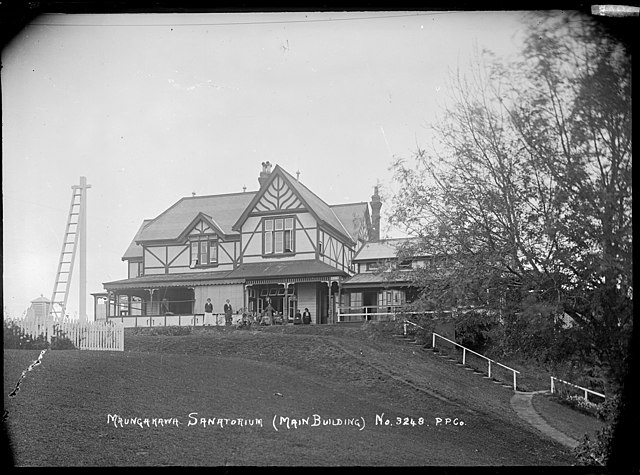Top Qs
Timeline
Chat
Perspective
Maungakawa
From Wikipedia, the free encyclopedia
Remove ads
Maungakawa is located in the Waipa District, in the present-day Te Miro settlement, northeast of the town of Cambridge, New Zealand. It was once the meeting place of the Kauhanganui, the parliament of the Kīngitanga and Waikato Tainui government.[1]

Remove ads
History
During the 1860s Maungakawa had a population of several hundred.[2]

In 1868 10,000 acres (4,000 ha) was bought, or leased from Māori owners by Daniel Thornton,[3] and, after his death, a large house was put on what was later called Sanatorium Hill.[4]
In 1891 a building, called the Maori Parliament Building, was opened by Māori King Tawhiao. The opening was attended by between 4,000 and 5,000. After returning from England after failing to have an audience with Queen Victoria, King Tawhiao convened a Māori parliament[a] at Maungakawa in 1894. Māori travelled from all across the country for this parliament.[5]
Remove ads
Sanatorium
Te Waikato Sanatorium for tuberculosis was officially opened in 1903 by Liberal Prime Minister, Sir Joseph Ward,[6] as one of the few the Public Health Department hospitals .[4] Closure came in 1921,[7] during the second Massey Ministry, when Health Minister James Parr said half the beds were empty.[8] He was supported by Cambridge Borough Council; the Mayor saying it was a burden on the state.[9]
Remove ads
Maungakawa Scenic Reserve
Maungakawa Scenic Reserve was named after the former Maungakawa estate.[10] The reserve has a native bush walk and views over the surrounding area.[11] It was formed in 1953. The Gudex stone obelisk was erected on Pukemako hill, when 7 acres were set aside from the reserve to become Gudex Memorial Park in 1968. On a clear day Mt Ruapehu and Mt Taranaki are visible.[10]
Notes
References
Wikiwand - on
Seamless Wikipedia browsing. On steroids.
Remove ads
